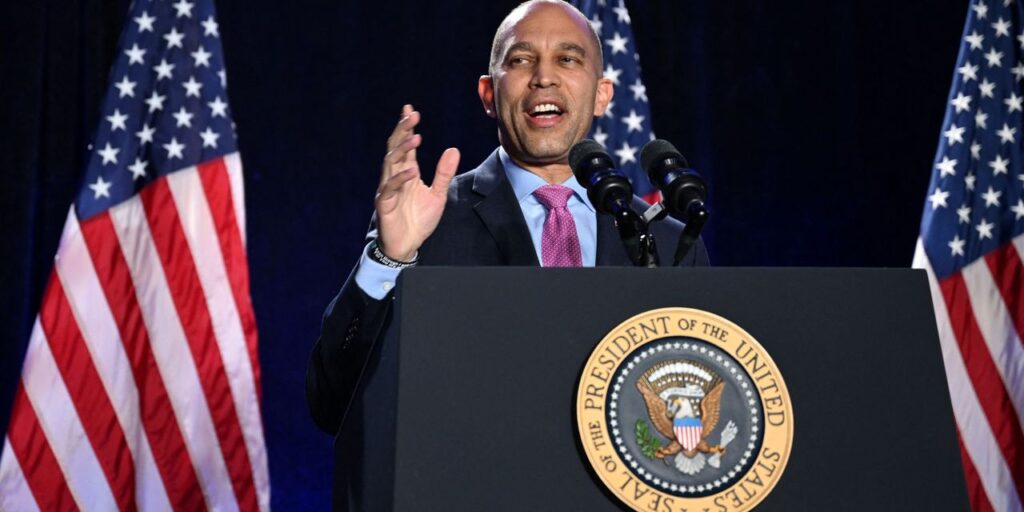House Democrats on Wednesday said they were unanimous in backing a parliamentary procedure to raise the U.S. debt ceiling, as negotiations between the White House and Republicans over the borrowing limit go down to the wire.
Democrats lined up behind what’s known as a discharge petition after House Minority Leader Hakeem Jeffries of New York said his party must try “all legislative options” due to the urgency of avoiding default. Treasury Secretary Janet Yellen has said that the U.S. could fail to pay its bills on time as soon as June 1 if Congress doesn’t raise the debt ceiling.
House Speaker Kevin McCarthy on Thursday continued to sound somewhat upbeat about resolving Washington’s debt-ceiling standoff, saying negotiators had worked well past midnight and made some progress. “There’s still some outstanding issues, and I’ve directed our teams to work 24/7,” the California Republican told reporters.
Here are a few things you should know about the discharge-petition procedure.
What is a discharge petition?
It’s a means of getting a bill to the House floor for a vote. While that sounds routine, it’s actually rather complicated. A discharge petition lets lawmakers bypass leadership, which is critical in this case, since the House is run by Republicans under McCarthy. Think of it as an end run.
It requires signatures and states a demand — in this case, raising the debt ceiling.
A successful use of the discharge-petition option requires a bill to have been filed 30 or more legislative days earlier and to be languishing in committee. In January, Democrats — anticipating that McCarthy’s right flank would seek to stoke a debt-limit crisis in the spring — acted to satisfy this requirement, with Rep. Mark DeSaulnier from Northern California’s East Bay region quietly putting forward legislation labeled the Breaking the Gridlock Act.
How many signatures does it need?
It needs 218. This is one of the hard parts — if not the hardest part — for Democrats, since Republicans control the House 222-213. That means at least five Republicans need to join Democrats for the discharge petition to be successful. That’s a tall order, especially as McCarthy has slammed the move, recently telling Fox Business it was “going nowhere.”
Have discharge petitions been used successfully in the past?
Yes, but rarely. Some examples include renewing the Export-Import Bank in 2015, campaign-finance reform in 2002 and the first U.S. minimum-wage law in 1938.
What happens next?
Even if the House were to pass a bill to raise the debt ceiling, the Senate would have to act as well. A former House parliamentarian told the Wall Street Journal that final passage of an increase could come after the earliest projected X-date — the day on which the government can’t meet all its obligations.
Meanwhile, at least one Washington analyst is calling the discharge-petition effort “pure noise.”
“We get what House [Democrats] are doing from a political and messaging perspective,” Tobin Marcus of Evercore ISI said in a note. “The discharge petition was fantastical in January and has only gotten more clearly unrealistic since then.”
Read the full article here











